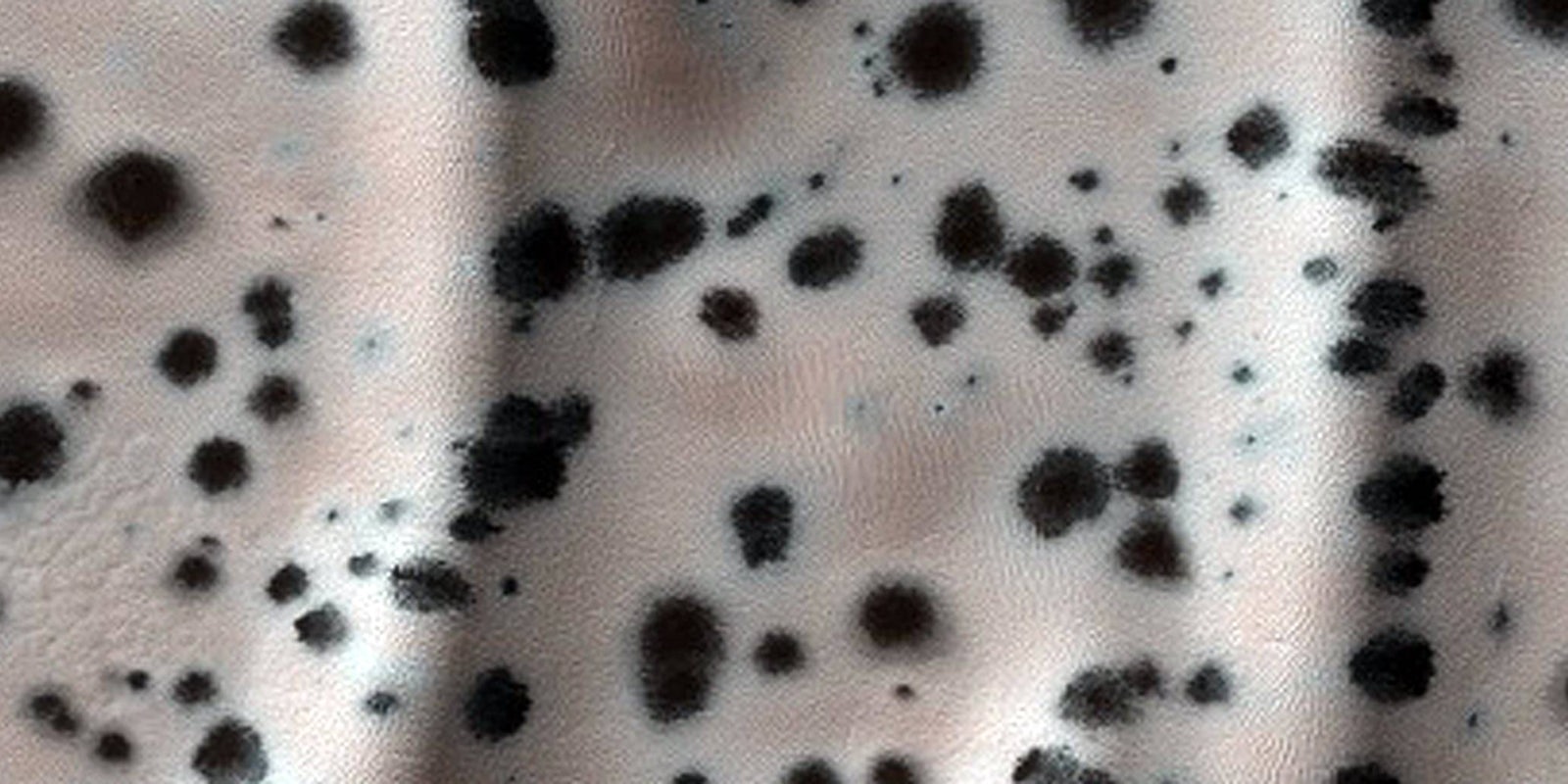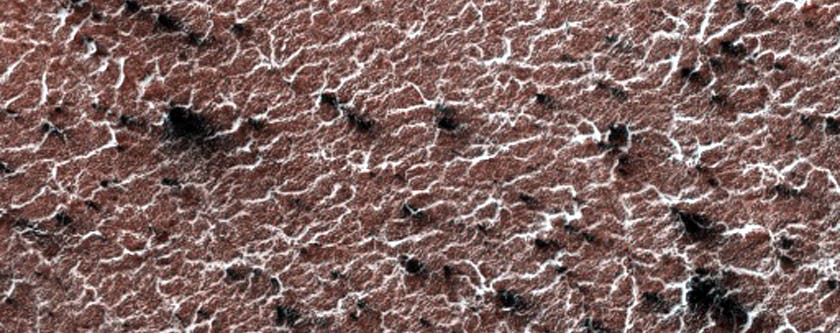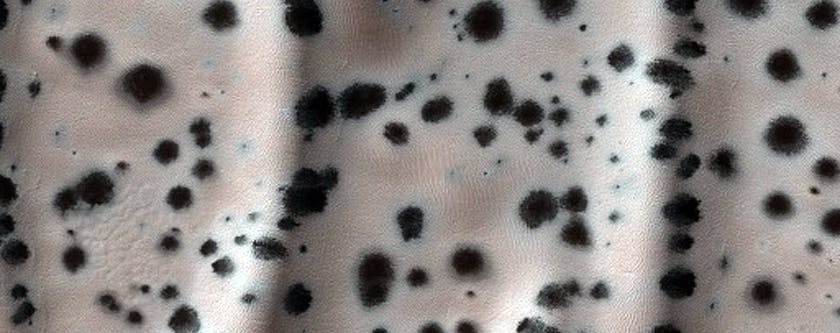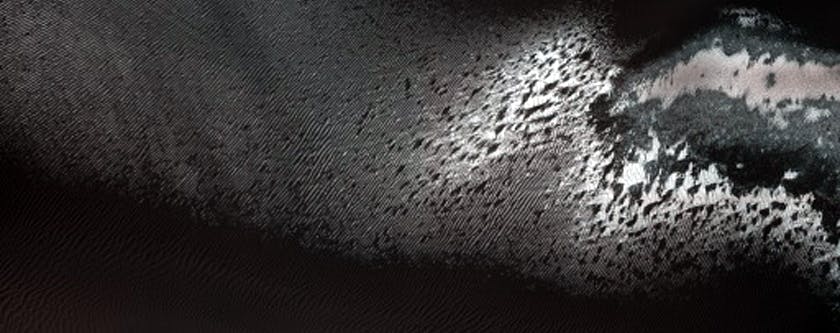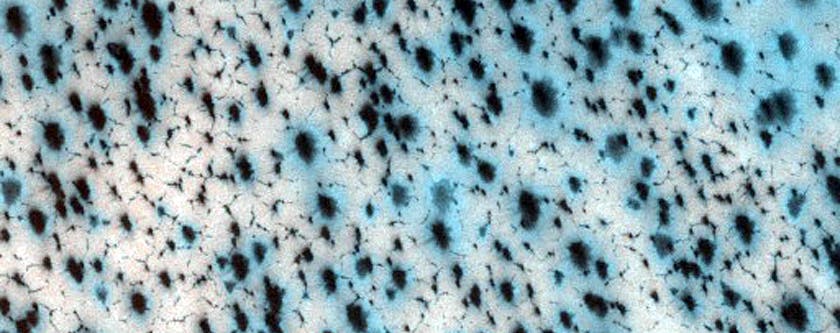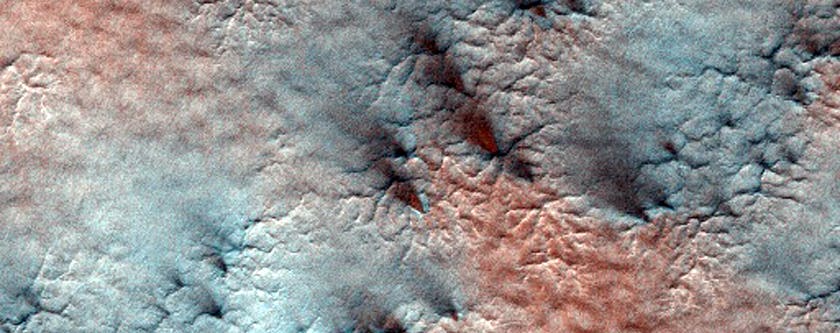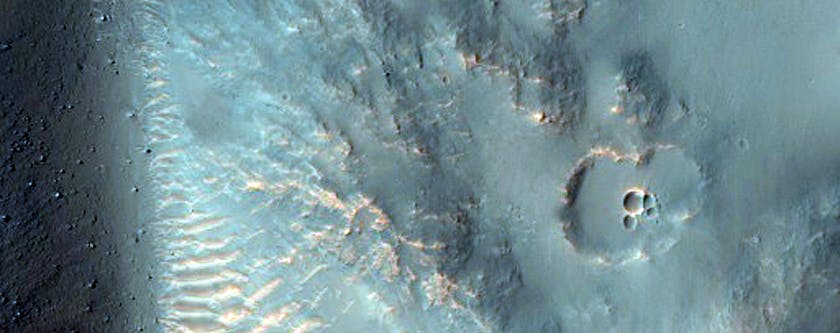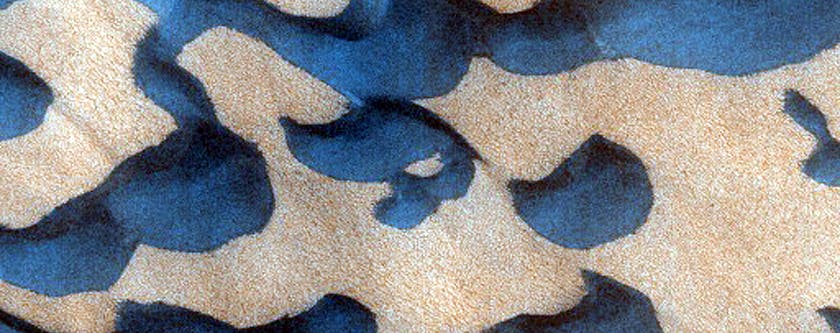While Americans were celebrating the Fourth of July, Mars was quietly celebrating its spring equinox. And a team of space photographers were ready to help document the special day.
On Mars’ spring equinox, both the northern and southern poles of the red planet are exposed to the sun, leading to the optimal conditions to capture the planet’s beauty, according to Quartz. The High Resolution Imaging Science Experiment (HiRISE) camera aboard the Mars Renaissance Orbiter (MRO) caught the scene.
HiRISE helps cut through the hazy Martian atmosphere by providing high-contrast, digitally-enhanced images to show the true contours of the planet. Like with satellite images, and many of the more colorful photos of Pluto from last year, the HiRISE images use false colors, which is why all the pictures don’t look like red blobs.
In this case, according to Quartz, the reds indicate dust settling from the atmosphere, blues indicate rocky features, and whites indicate surfaces covered in frost and dry ice.
Alfred McEwen, the lead scientist for HiRISE, told Quartz that these photos can tell a lot about the geological history of the red planet, as well as help future missions to Mars figure out where to land without running into a boulder.
H/T Quartz

